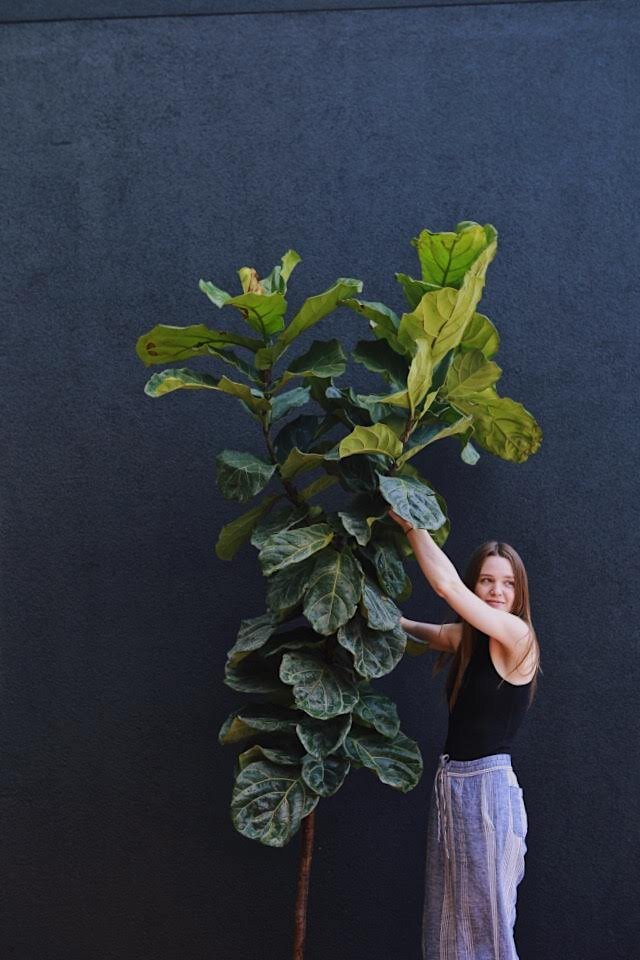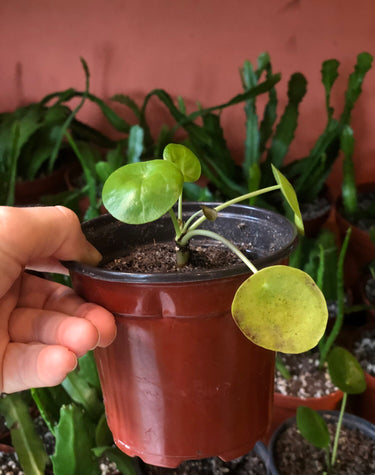
Fertilizing Info for the *CASUAL* Plant Owner
What you can learn about fertilizers without having to become a botanical expert.
That would be me- not a botanist, but a casual plant owner. I may be a plant shop owner, but this also means that when I come home, I want things with my plants to run smoothly and automatically. I water on schedule, give my plants the light they need, repot them as needed, and just enjoy watching them transform. That’s a complex enough routine for me.
But I also realize I could take this routine to the next level by adding on a multivitamin. Plants deserve the best from us, right? So I took a look into fertilizing. That look turned into a deep dive. Turns out, the world of fertilizers is an intricate one. And I’ve decided that I am not a greenhouse owner, I just want to keep my plants happy.

So here are the important bits, keeping it nice and simple:
What exactly IS fertilizer? And how do I choose?
In nature, plants benefit from a nutrient dense soil that results from insects and fungus that inhabit the soil, as well as nutrient-dense organic matter that dies and falls to the top of the soil, working its way down into the soil over the course of decomposition and rainfall. For our indoor plants, we can supplement these conditions with fertilizer.
Most fertilizers are composed of various combinations of Nitrogen, Phosphorus, and Potassium. You’ll see 3 numbers on a bottle of fertilizer which represent the ratio by weight of the bottle. This means that higher numbers are most likely a concentrated synthetic fertilizer, and lower numbers indicate that it’s a gentler organic fertilizer.
Here you can see the 3 numbers displayed clearly. This is a well-balanced fertilizer, and we can assume it is organic because the numbers are relatively low.

Nitrogen aids in photosynthesis, Phosphorus promotes blossoming, and Potassium promotes healthy roots and disease prevention. The laid-back plant owner should look for a well-balanced fertilizer, bonus points if it includes micronutrients. If you’re looking to get more nuanced, like finding a fertilizer for a specific plant, you look it up for the specific plant- but you most likely will not need to resort to this.
A few examples of such nuances include:
-
A foliar spray fertilizer for Air Plants
-
A bloom-boosting fertilizer for plants that blossom like Begonias and African Violets
This is a largely organic mix, as indicated by the lower numbers. It’s made from Earthworm Castings and Bat Guano, both of which are nutrient-dense soil amendments.

We tend to gravitate towards liquid or crystal fertilizers because they’re easier to use: just dissolve into water and proceed to give your plants a good deep watering.
This is an example of a well balanced synthetic fertilizer in the form of crystals which you dissolve into water.
The higher ratio of Phosphorus (the middle number) will enhance blossoming.
The label indicates that it includes micronutrients, which is always a plus when selecting fertilizers.

In all cases, we recommend that you DILUTE your fertilizers. Whatever amount you see on the label, cut it in half. It’s much better to under-fertilize than to over-fertilize. An excess of fertilizer can impair a plant’s ability to take in sufficient water through its roots and circulate throughout the rest of the plant.
Since it’s safer to air on the side of under-fertilizing, we recommend that you start by fertilizing no more frequently than once per month. As you grow your collection and gain a deeper understanding of your plants as individuals, you can build on this routine.
Wait- I haven’t fertilized! Did I just sentence my plants to death??
Definitely not. Most likely when we acquired the plant from its growers, it was potted into a medium with nutrient rich compost and/or slow-release fertilizer pellets (those little balls you sometimes see in your soil!). So for up to the first year of plant ownership, you really don’t need to fertilize.
Additionally, you do not want to fertilize unless it’s the growing season, so it’s possible that you can go up to a year and a half after purchasing your plant before needing to feed it.
Ok, so where do I even start??
First thing to consider: are we in a growing season? This is the time when your plants are expected to see an uptick in new growth due to warmer climates and more hours of sunlight per day. Here in the Northeast, this tends to fall between early spring and late fall. For tropical or subtropical climates, however, you can fertilize year round.
Another thing to consider: has my plant been recently repotted? If you’ve potted into fresh soil in recent months, you can pass on fertilizing. The fresh soil should be packed with nutrients, and you’ll also want to give your plant a chance to grow into the fresh soil before fertilizing.
WAIT- my plant is looking a little sad, should I help it along with some fertilizer?
Good rule of thumb is to use fertilizer to maximize its growth- feed it when it is healthy and ready to receive nutrients. Most likely, if your plant is showing some signs of struggle, you’ll want to focus on troubleshooting your watering. If your plant is in a weakened state, it’s possible that fertilizing will only add to your problems, as fertilizer can sometimes damage the roots of your plant.
We have a lot of posts on troubleshooting issues with your plants like common issues with new plants, common signs of overwatering, and how to identify and treat for common house plant pests!



Leave a comment
This site is protected by hCaptcha and the hCaptcha Privacy Policy and Terms of Service apply.